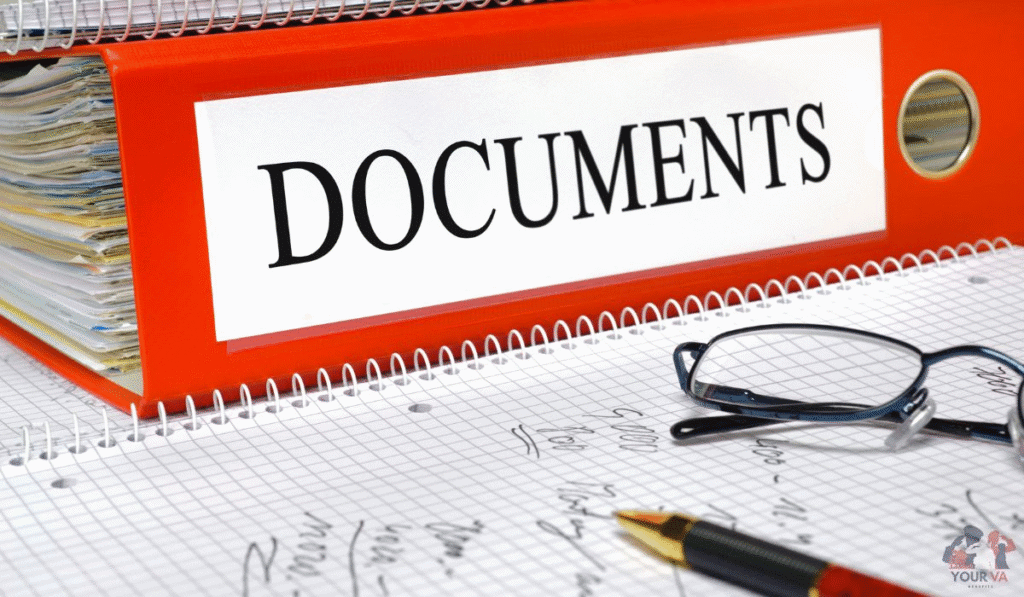
Navigating your transition from military service should be a time of exciting new beginnings, not waiting on a VA claim. Imagine getting your VA disability compensation claim decision in about 30 days after you leave service. That would be great, right?
That’s the powerful advantage of a BDD claim. While a standard claim can take months, this program is designed for speed and efficiency, a stark contrast to the 141.5-day average process time for VA disability claims in 2025.
From our experience, this head start makes all the difference for veterans’ families and their future. This guide will walk you through every step of the BDD process, showing you how to file a successful disability claim before discharge.
We’ll help you gather your supporting documents, understand how VA rates conditions, and avoid mistakes that cause delays. Consider this your roadmap to a smoother transition and faster benefits.
Our previous article on authorization review claim provides important context about how the department evaluates your application.
After reading this guide, you’ll want to check out our upcoming post on VA development letter, which explains what happens when the VA needs additional information from you.
For a broader look at the department’s procedures, this connects to our post on Initial VA Disability Claims. Let’s get you the compensation you earned!
Key Points
- The BDD claim program allows active-duty service members to file for VA disability compensation 180-90 days before separation.
- Its main benefit is speed, aiming for a claim decision within 30 days of leaving the military.
- Success depends on submitting all service treatment records and required separation documents on time.
- Avoid delays by attending all VA exams and not adding new conditions after the 90-day mark.
What Is a BDD Claim and Why It Matters for Service Members
For service members, the Benefits Delivery at Discharge program, or BDD claim, is a game-changer. It lets active-duty military members file their pre discharge claim before their service ends. You can start 180 days out from your separation date.
If you want a swift claim decision, this proactive step is your best path.
Speed Is the Biggest Advantage
BDD claims get priority treatment. The VA starts reviewing your medical evidence and scheduling exams while you’re still on active duty. This means you could receive your disability rating and compensation decision incredibly fast after discharge.
Compare that to a standard claim, which can take many months. Getting a faster decision reduces financial stress for your spouse, child, and dependency support system.
It provides clarity as you start your next chapter, whether that means education, employment, or even buying a new house.

How BDD Differs From a Standard Claim
Think of it like checking in for a flight early. With a BDD claim, you do all the work upfront. The VA reviews your documents, examines your medical records, and schedules exams while you are still in uniform. A standard claim is filed after you are already a veteran.
Everything happens from scratch, which naturally takes more time. The process is simply built for speed.
You Do Not Need a Formal Diagnosis
This is a huge misconception. Many service members believe they need a doctor’s official diagnosis for every condition. That isn’t true. You need proof that an event, injury, or illness happened during your military service.
You also need proof that it causes you ongoing symptoms or issues. The VA examiner can often determine the diagnosis you need during your exam. Your job is to write everything down and report it fully. Don’t leave anything out because you think it is not “official” enough!
Want To Increase Your Rating?
BDD Claim Eligibility Requirements and Timeline
This program has strict rules that you must follow to use this faster track. Another crucial piece is timing, the most critical part of the entire process.
The Crucial 180–90 Day Window
You must file your BDD claim in a very specific window. It opens 180 days before your final separation date. At the 90-day mark, it slams shut. Submit inside this window, and your claim retains its BDD status.
File even one day late, at 91 days pre-separation, and you are moved to the standard claim track. This delay can add months to your wait for a claim decision.
Who’s Eligible?
Most active-duty service members are eligible. This includes those in the National Guard, Reserve, and Coast Guard on full-time active duty orders. However, you cannot use the BDD claim program if your claim requires a VA exam in a foreign country.
Exceptions are made for service members in Germany or South Korea. You also cannot use it if you’re still awaiting the final character of your discharge determination notice.

Gather These Required Documents
Filing successfully means submitting the right supporting documents. Your service treatment records are the most important piece of medical evidence. You must also include your separation documents (like your DD Form 214 once available).
Don’t forget your Separation Health Assessment Part A Self-Assessment form! This forms part of the summary of your physical health and provides the VA with critical additional information.
What If You Miss the Window?
Don’t panic if you missed the window! You still have options. You can file a fully developed claim, meaning you send the VA all your supporting documents, medical evidence, and medical records at once.
It’s not as fast as BDD, but faster than a standard claim where the VA helps gather evidence. For example, a veteran who files 60 days before separation would submit a fully developed claim.
If your claim is denied, you may need to request a supplemental claim with additional evidence or new evidence. This could include updated evaluations or proof of worse severity of your condition.
How to File Your BDD Claim Successfully
A successful BDD claim hinges on preparation and choosing the right filing method.
Step 1. Choose How You File
You have two excellent paths to submit your claim:
- Filing Online via VA.gov: Direct portal access. You upload documents and track the process yourself.
- Working with a VSO: A Veterans Service Officer can help you complete forms, gather supporting documents, and submit everything. Their support is free.
Step 2. Gathering Comprehensive Medical Evidence
Your medical records are the foundation of your disability claim. Collect every piece of evidence that shows an injury, illness, or physical appointment. This includes your complete service treatment records.
Also gather civilian medical professional notes if you sought treatment off-base. Strong evidence supports a higher disability rating or even a combined disability rating if multiple conditions apply.

Step 3. Documenting Service-Connected Conditions
Always link your condition to military service. This creates a service connected disability record. Write a personal statement describing the event, symptoms, and impact on your life.
This additional evidence can help the VA determine the right rating and compensation.
Step 4. Working With Medical Professionals
Be specific with your medical professional. Describe the severity of your pain. Don’t say “I’m fine” if you’re unable to function. Use terms like “constant aching” or “unable to lift my child.”
This helps the VA review your case and determine proper VA rates. It also strengthens your case for additional compensation such as aid and attendance benefits or attendance benefits if you need daily aid.
Avoiding Common BDD Claim Mistakes That Cause Delays
Knowing the pitfalls is just as important as knowing the steps. A simple error can bump you from the fast lane into much slower traffic.
Missing the 90-Day Document Deadline
You must submit all service treatment records and supporting documents before the 90-day deadline. If not, your claim moves to a standard claim, delaying your claim decision.
Submitting Incomplete Evidence
If your medical evidence or medical records are incomplete, the VA cannot determine your rating. This could result in a lower disability rating or even a denied condition.
Adding New Conditions Late
Adding new evidence or conditions after filing often delays the entire process. The VA must schedule more exams, which increases your wait.

Missing Exams or VA Requests
Skipping exams or ignoring a VA notice for additional information halts your claim. Always respond quickly to every request.
BDD Claim Filing Checklist & Timeline
| Timeframe | Action Items |
| 180–150 Days Before Separation | • Confirm you are eligible for the BDD program. • Decide whether to file online via VA.gov or with a Veterans Service Officer (VSO) for expert support. • Begin gathering service treatment records, medical records, and other supporting documents as evidence. |
| 150–120 Days Before Separation | • Collect draft separation documents (DD-214 and other forms). • Complete the Separation Health Assessment Part A Self-Assessment for medical evidence of your physical condition. • Request updated evaluations from a medical professional to reflect the severity of your symptoms. |
| 120–90 Days Before Separation | • Finalize all documents and submit your BDD claim with complete supporting documents. • Double-check your contact information for VA notices and exam scheduling. • Add any new evidence or additional information before the deadline to avoid denied conditions or delays. |
| After Filing (Until Separation) | • Monitor VA communication for compensation & pension exams, and attend all appointments. • Respond quickly to every request for additional information or supporting documents. • Keep organized copies of all documents for review. |
| After Discharge | • Expect your claim decision within ~30 days if all documents were properly submitted. • Carefully review your disability rating — check for combined disability rating and eligibility for additional compensation like aid and attendance benefits. • If denied, consider filing a supplemental claim with new evidence or re-filing as a fully developed claim. |
Quick Checklist
After discharge: Expect claim decision in ~30 days, review your disability rating, check for combined disability rating and additional compensation, consider a supplemental claim if denied.
180–150 days: Confirm eligibility, choose filing method (VA.gov or VSO), gather service treatment records and medical records.
150–120 days: Collect separation documents, complete health assessment forms, get updates from a medical professional.
120–90 days: Finalize supporting documents, submit BDD claim, check VA notice preferences, add any new evidence early.
After filing: Attend all VA exams, respond quickly to requests for additional information, keep copies of all documents.
After discharge: Expect claim decision in ~30 days, review your disability rating, check for combined disability rating and additional compensation, consider a supplemental claim if denied.
Final Thoughts
A BDD claim may sound complicated, but with preparation, service members can see faster claim decisions and smoother transitions into civilian life.
Plan ahead, organize your documents, and don’t ignore VA requests. Even if your claim is denied, options like a fully developed or supplemental claim exist.
Every step you take now shortens the wait later. Strong evidence ensures fair VA disability compensation, a proper disability rating, and even access to pension, education benefits, or additional compensation for your spouse and families.
For more support and guides on VA disability and related benefits, explore our homepage.


